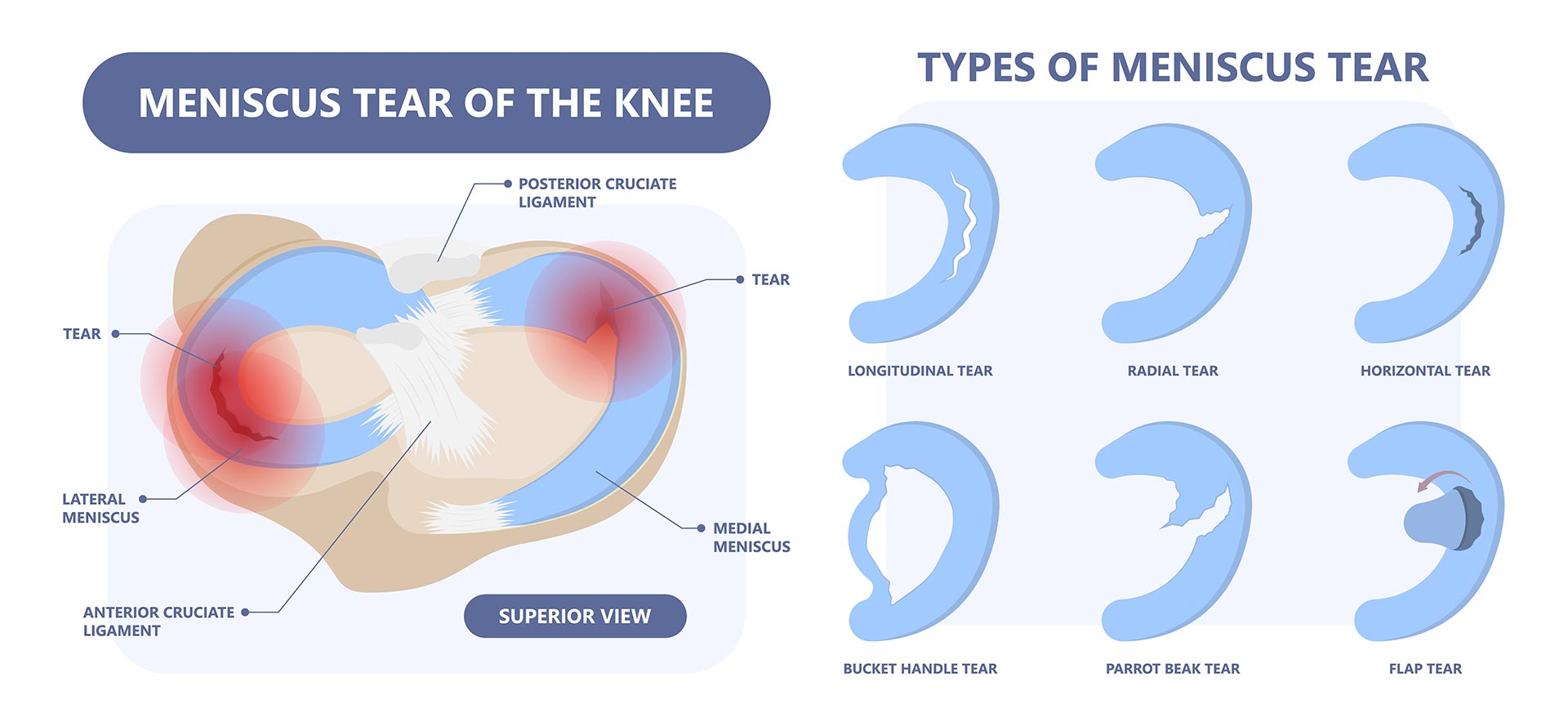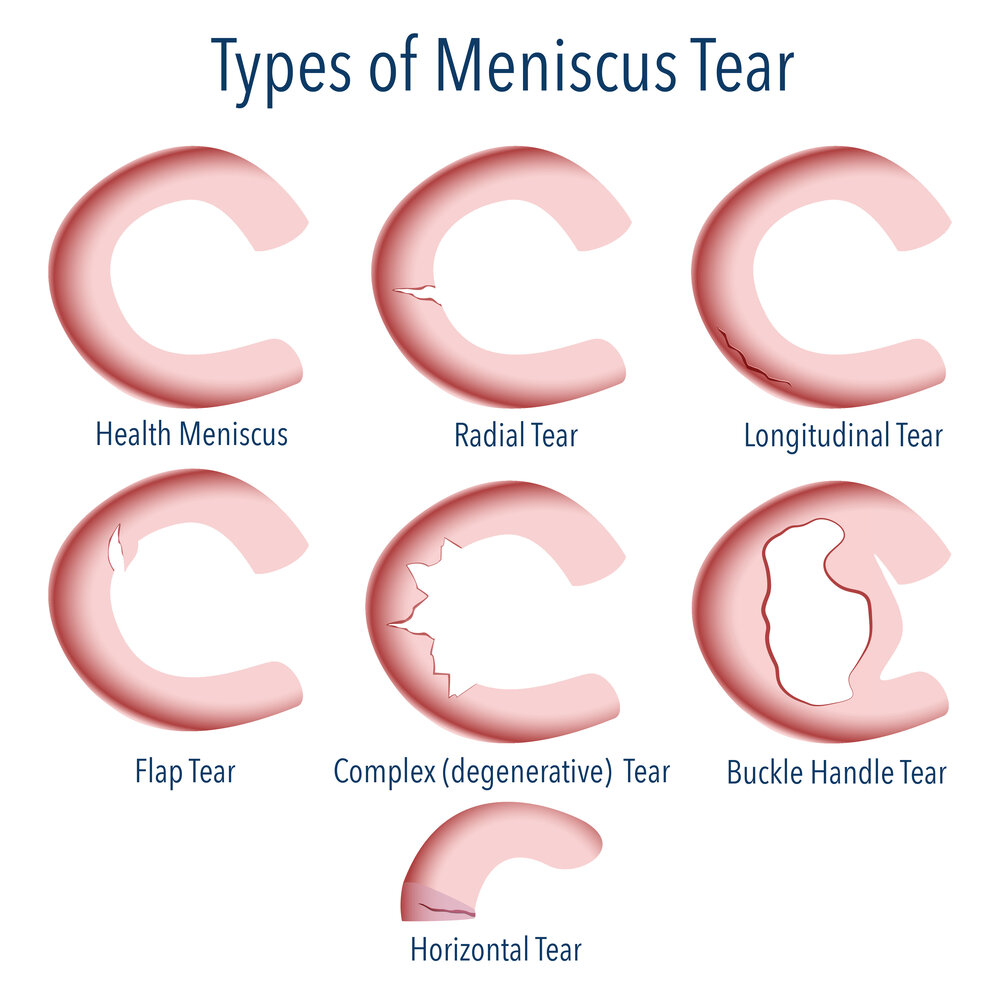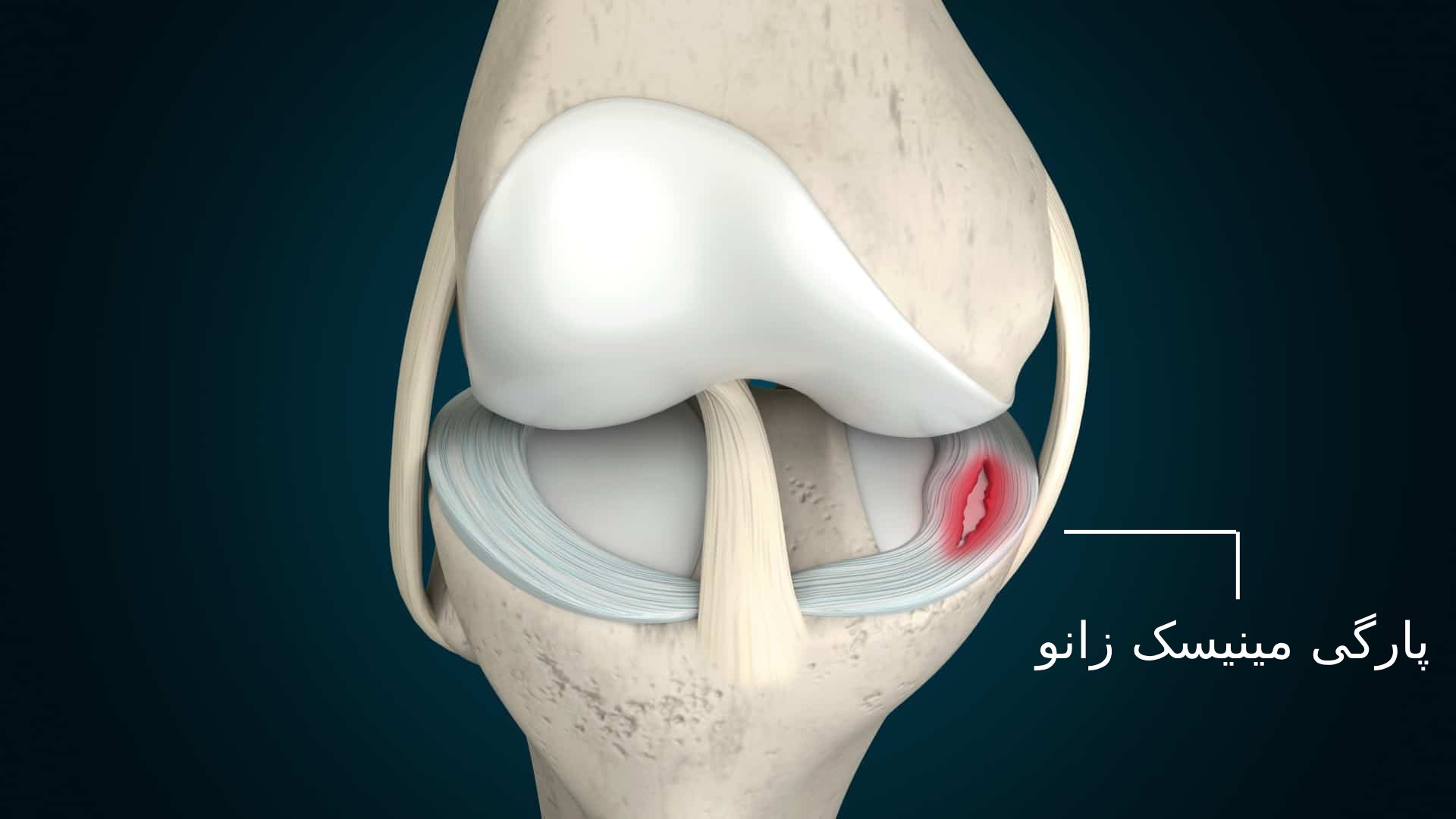Anatomy and Function of the Meniscus

The meniscus is a C-shaped piece of cartilage that acts as a shock absorber and stabilizer within the knee joint. It is located between the femur (thighbone) and the tibia (shinbone), and its primary function is to distribute weight evenly across the knee joint, reducing stress on the cartilage and bones.
Structure and Location of the Meniscus
The meniscus is composed of fibrocartilage, a tough, flexible tissue that can withstand significant forces. It has two distinct components: the medial meniscus, which is located on the inner side of the knee, and the lateral meniscus, located on the outer side. Both menisci are attached to the tibial plateau, the top surface of the tibia, and are held in place by ligaments.
Roles of the Medial and Lateral Menisci in Knee Stability and Weight Distribution, Torn meniscus
The medial and lateral menisci play crucial roles in knee stability and weight distribution. They act as cushions, absorbing shock and reducing friction between the femur and tibia during movement. The menisci also help to distribute weight evenly across the knee joint, preventing excessive pressure on specific areas of the cartilage. This is particularly important during activities that involve high impact, such as running and jumping.
Blood Supply to the Meniscus and Its Implications for Healing
The meniscus receives a limited blood supply, primarily in the outer portion, known as the “red zone.” The inner portion, known as the “white zone,” is largely avascular, meaning it receives very little blood. This limited blood supply has significant implications for healing after an injury.
Injuries to the red zone, which has a better blood supply, have a higher chance of healing. Conversely, injuries to the white zone, with its limited blood supply, often require surgical intervention.
Types of Meniscus Tears: Torn Meniscus

A meniscus tear occurs when the tough, rubbery cartilage that cushions the knee joint is torn. The meniscus can be torn by a sudden injury, such as a twisting motion or direct blow to the knee, or it can gradually tear over time due to wear and tear. Meniscus tears are common, especially in athletes and people who participate in activities that put stress on the knee.
There are many different types of meniscus tears, and the type of tear will determine the severity of the injury and the best course of treatment.
Types of Meniscus Tears
Meniscus tears are classified based on their location, shape, and severity. Here are some of the most common types:
- Radial Tear: This type of tear is a vertical split in the meniscus, which extends from the outer edge of the meniscus toward the inner edge. Radial tears are the most common type of meniscus tear. They can be caused by a sudden twisting motion of the knee or a direct blow to the knee.
- Horizontal Tear: This type of tear is a horizontal split in the meniscus. Horizontal tears are less common than radial tears and are often caused by a direct blow to the knee.
- Flap Tear: This type of tear occurs when a small piece of the meniscus is torn away from the main body of the meniscus. Flap tears are often caused by a sudden twisting motion of the knee.
- Bucket-Handle Tear: This type of tear is a serious injury that occurs when a large portion of the meniscus is torn away from the main body of the meniscus. Bucket-handle tears are often caused by a sudden twisting motion of the knee or a direct blow to the knee. The torn portion of the meniscus can become trapped in the joint, causing pain, swelling, and locking of the knee.
- Degenerative Tear: This type of tear is caused by wear and tear on the meniscus over time. Degenerative tears are common in older adults and can be caused by activities that put stress on the knee, such as running, jumping, and squatting.
Mechanism of Injury
The mechanism of injury associated with each type of meniscus tear depends on the specific type of tear. For example, a radial tear is often caused by a sudden twisting motion of the knee, while a flap tear is often caused by a direct blow to the knee.
Symptoms and Diagnosis of a Torn Meniscus

A torn meniscus can cause a variety of symptoms, ranging from mild to severe. The severity of the symptoms depends on the size and location of the tear, as well as the individual’s activity level.
Common Symptoms
The most common symptoms of a torn meniscus include:
- Pain: Pain is often the first symptom of a torn meniscus. The pain is usually located in the knee and may worsen with activity, such as walking, running, or squatting. It can also occur at rest, especially when the knee is bent for long periods.
- Swelling: Swelling in the knee is another common symptom of a torn meniscus. The swelling may be gradual or sudden, and it can be caused by fluid buildup in the joint.
- Locking: Locking occurs when the knee gets stuck in a bent position and cannot be straightened. This happens when a piece of torn meniscus gets trapped in the joint.
- Clicking: Clicking or popping in the knee can occur when the torn meniscus moves or rubs against the joint.
- Stiffness: Stiffness in the knee is also a common symptom of a torn meniscus. This can make it difficult to bend or straighten the knee.
Diagnostic Methods
Diagnosing a torn meniscus typically involves a combination of physical examination and imaging tests.
Physical Examination
During a physical examination, a doctor will assess the range of motion in the knee, check for tenderness, and perform specific maneuvers to evaluate the meniscus. These maneuvers include:
- McMurray’s Test: This test involves rotating the knee while it is bent and extended to assess for clicking or popping, which can indicate a torn meniscus.
- Apley’s Compression Test: This test involves applying pressure to the knee while it is bent and rotated to check for pain or tenderness, which can suggest a meniscus tear.
Imaging Tests
Imaging tests, such as MRI and X-ray, can help confirm the diagnosis and determine the severity of the tear.
- Magnetic Resonance Imaging (MRI): An MRI provides detailed images of the soft tissues in the knee, including the meniscus. It is the most accurate test for diagnosing a torn meniscus.
- X-ray: An X-ray can rule out other causes of knee pain, such as fractures, but it is not as effective as an MRI in detecting a torn meniscus.
Differences in Symptoms and Diagnostic Findings
The following table summarizes the key differences in symptoms and diagnostic findings for different types of meniscus tears:
| Type of Tear | Symptoms | Diagnostic Findings |
|---|---|---|
| Horizontal Tear | Pain, swelling, clicking, locking | MRI shows a horizontal tear in the meniscus |
| Vertical Tear | Pain, swelling, catching, instability | MRI shows a vertical tear in the meniscus |
| Bucket-Handle Tear | Severe pain, locking, instability | MRI shows a large, flap-like tear in the meniscus |
| Degenerative Tear | Mild pain, stiffness, swelling | MRI shows a small, frayed tear in the meniscus |
Torn meniscus is a pain, man. It’s like your knee’s got a mind of its own, and it’s saying “nope, not moving.” Reminds me of Justin Jefferson’s injury, you know, that one that messed him up. Hope he gets back to beasting soon.
Anyway, torn meniscus, it’s a bummer, but rehab is key to getting back on your feet, yo.
Torn meniscus is a real bummer, man. It’s like, your knee’s all messed up and you can’t even walk properly. It’s like a gibbs injury but for your knee, you know? Anyway, it’s something you gotta take seriously, get it checked out by a doctor, and maybe even get surgery if it’s bad enough.
